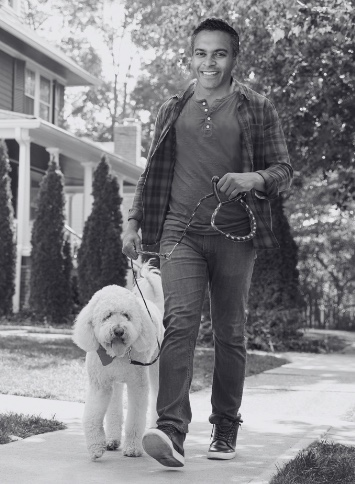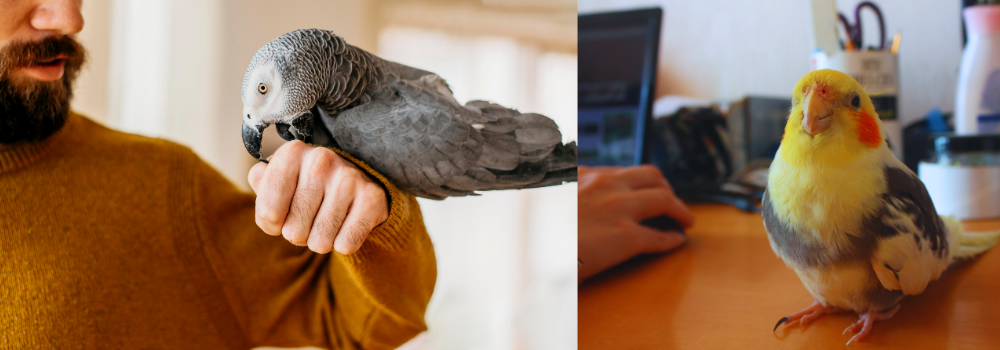Which Pet Is The Best for Remote Workers?
Hint: It’s Not What You’d Think!
April 1, 2023 – Austin, Texas – In recent years, the remote work trend has evolved into a way of life. With more professionals working from home, we found that the remote work experience for individuals, regardless of race, religion, family size or socio-economic status, had one no-so-obvious thing in common – a pet. At Haymaker we pride ourselves on making the remote work experience better, so we imparted on a months-long study to uncover the question of which pet is best suited for someone that works from home. We are excited to take you through our methodology and findings, and reveal the best remote work companion. whether fur, feather or scales.
Why a Study About Pets?
John Abraham, co-founder of Haymaker, explains what inspired the research. “At Haymaker, our goal is to make the remote work experience better for all professionals. We wanted to get to the heart of what we had been hearing – that a pet made remote work preferential, and the overall remote work experience more enjoyable. We wanted to go beyond the “cat on my lap” videos we had seen, and really understand what pet was best for the remote work experience. I’m thrilled about what our team has discovered. We hope that our research can assist remote workers worldwide in selecting the best pet for their workspace, and ultimately, make their remote work experience even better.”
Study Methodology
We had three major categories of methodologies to our study. Reviewing video conference call recordings meetings, interviews with individuals that work remotely and either do or do not have a pet, and tag-along days with pet-owners that work remotely with their pets in their home work space. Our pet-owners were broken across five categories – those that own dogs, cats, birds, reptiles or small mammals.
In reviewing the video conference calls, we were looking for how often a pet appeared in the video, or was off-camera but could be heard on the call. We only reviewed calls that we were able to easily identify in the first 90 seconds that someone on the call had a pet. Of the 1200 videos we had access to, roughly 1150 met the qualifying criteria.
We participated in 100 tag-along days, where we were present with a remote worker in their home work space for the entirety of the work day. Continuous monitoring of biometric readings was required to understand the impact the pet had on their heart rate, breathing rate, cortisol level, and alertness.
We examined how often pets interacted with their owner, their presence or sound interrupted the pace of a video call or sidetracked their owner or other call participants, and how often a pet-owner needed to attend to or wanted to interact with their pet throughout the day.

In reviewing the video conference calls, we were looking for how often a pet appeared in the video, or was off-camera but could be heard on the call.
Our Furry Findings
While the indicators across the different pet types varied drastically, we were able to clearly identify a pet that contributed to the most enjoyment and positive well-being for their owner.

Dogs
Dog-owners presented as the most stressed during the work day of the pet-owners evaluated. Study participants were often going on and off mute, or holding their fingers up to the screen indicating to their colleagues to give them a moment as their dog finished barking. We noted annoyance of other members of the call and thus side-tracking the flow of the meeting. We measured increased stress levels of the pet-owner as this occurred. We noted a solution from one pet owner who silenced their dog with a remote control on their desk, and then breathed a sigh of relief. We found that dog-owners generally had an enjoyable experience with their dog by their side throughout the work day, and enjoyed the natural breaks throughout the day to take it for a walk to escape from the monotony of their computers.
Study participants were often going on and off mute, or holding their fingers up to the screen indicating to their colleagues to give them a moment as their dog finished barking.

Cats
Study participants that owned cats generally had the lowest level of cortisol throughout the day. We also found this group to be most likely to have several low energy points so much as needing to lie down, but was balanced with heightened periods of alertness and playfulness. We did notice rises in cortisol during certain times. One such time was frequently seen both in our in-person time and reviewing video calls. Often cats would carelessly walk across the keyboard, and stick their rump right into the computer camera, embarrassing their owner as they shielded it from view and removed the cat from its posterior-facing position. We noted levels of cortisol and heart rate spiking in these cases, and participants of the call were distracted. In our interviews, we found the cat as the most disliked of the pets in a remote work situation because of this display.
Often cats would carelessly walk across the keyboard, and stick their rump right into the computer camera, embarrassing their owner as they shielded it from view…

Birds
The sample size for birds was the smallest, but we did find commonality in this area. We found that birds were generally not disruptive and could only be heard off camera. Most birds were silent until the participants on the calls became louder, and then the birds vocalized. One participant had a bird that could speak, but would only speak obscenities, obviously distracting the business that was being done on the call. There was no notable difference in the biometrics of bird-owners vs the other pet-owners, but did we notice that brief interactions with the bird throughout the day provided a chance to get up and stretch.
One participant had a bird that could speak, but would only speak obscenities, obviously distracting the business that was being done on the call.

Reptiles
Our study found that owners of reptiles were calm throughout the work day, until they hadn’t taken a break in a while when cortisol levels took a drastic spike. Then rising from their desk, they were able to feed their pet, and eat themselves, and returned to their work with the focus and resolve that comes with satiated bellies. We found that the reptiles were not disruptive on any video conference calls, and were generally an enjoyable pet to have as a remote worker. However we found that the pet-owner participants lacked vitamin-D and may have contributed to overall well-being issues with having this pet.
…they were able to feed their pet, and eat themselves, and returned to their work with the focus and resolve that comes with satiated bellies.

Small Mammals
When it came to smaller mammals, we evaluated rabbits, mice and hamsters. Owners of this group seemed calmest throughout the day. Since confined to their enclosures, the pets in this category did not interrupt calls through vocalizing or appearing on camera.
We did notice a strange behavior of the pet-owners of the sub-group that owned hamsters, however. We would often find remote workers staring wistfully at their hamsters as they trudged along on their wheel. For many this seemed to inspire the worker to return to their desk with renewed energy and focus. For some, the worker would get up and walk out of the room with a determined look on their faces.
Because remote workers reported feeling a sense of companionship with their hamsters when they were exercising on the wheel, which improved their overall mood and productivity, we determined that this pet was the ideal for the remote worker.
We would often find remote workers staring wistfully at their hamsters as they trudged along on their wheel. For many this seemed to inspire the worker to return to their desk with renewed energy and focus.
Huzzah! Our Results!
In conclusion, our study identifies hamsters as the best pets for remote workers. They are quiet, self-sufficient, and provide a sense of companionship without interrupting their owner’s work, and provide inspiration when it’s needed to keep going throughout the day. We hope the findings of this study can help remote workers make an informed decision when selecting a pet to share their workspace.If you want an easier way to find a better remote work experience than getting your own hamster, check out Haymaker’s remote work spaces so you can get out of your own home, and find an energizing environment to get your best work done.
Haymaker also has pet-friendly spaces if you are inclined to bring your pet with you. You can check with your host about their policies before bringing your pet in tow.
